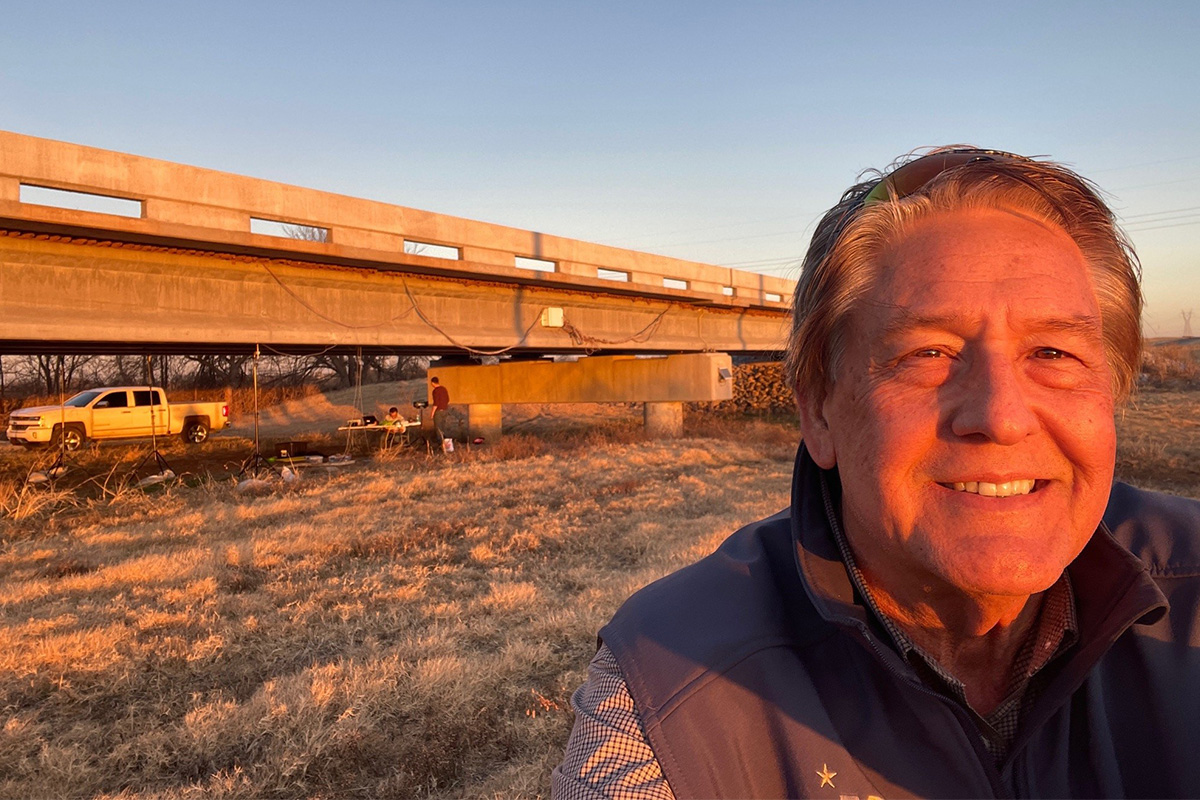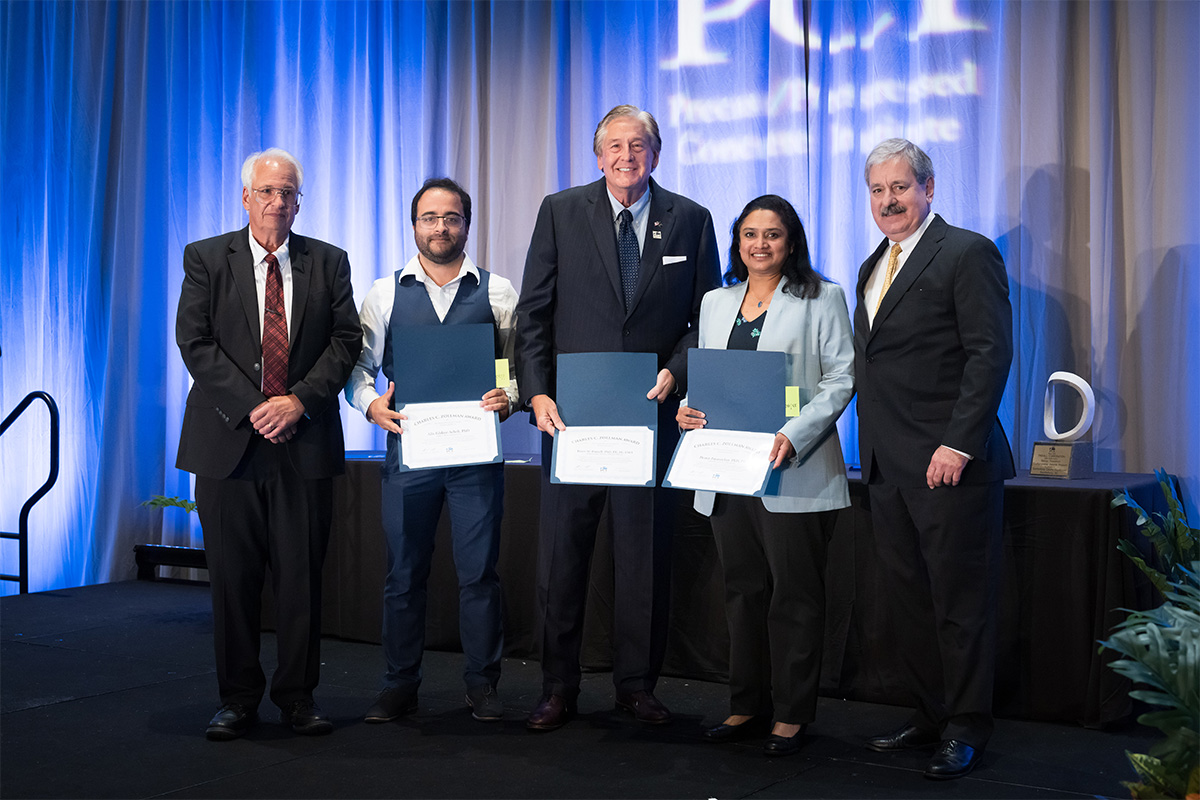Dr. Bruce W. Russell awarded prestigious Charles C. Zollman Award
Thursday, October 16, 2025
This September, Dr. Bruce W. Russell, professor for the School of Civil and Environmental Engineering, and his team were awarded the Charles C. Zollman Award for authoring the best transportation infrastructure paper in The Precast/Prestressed Concrete Institute Journal.
Their paper, “Assessment and Validation of Prestress Loss Prediction Models Using Real-Time Prestress Loss Measurements,” was co-authored by Russell, Alla Eddine Acheli, a graduate engineer with Walter P Moore, Hema Jayaseelan, an assistant professor of civil engineering at Cedarville University, Walters Peters, an assistant bridge engineer for the Oklahoma Department of Transportation, and Chris Filip, a structural engineer in training at the Wallace Design Collective and was published in the September-October 2024 issue.
This study investigated prestress loss measured on precast, prestressed concrete bridge beams for the SH 4 Bridge over the North Canadian River near Yukon, Oklahoma. The researchers examined the inclusion of mild reinforcing steel in the bottom flange of precast concrete girders and alternative prestressing patterns on the prestressing losses of pretensioned bridge girders. Data was collected from an ongoing stream of solar-powered structural monitoring system built and installed by Russell and his research team.
In addition to the measured data, the investigators compared five broadly accepted methods to predict the prestress losses at the girder midspan. Data show that current equations overestimate the concrete elastic modulus at early ages, leading to an underprediction of elastic shortening losses as well as the addition of non-prestressed mild steel in the bottom flanges of prestressed concrete girder reduces prestress losses and improves the predictability and reliability of camber in prestressed bridge girders.
Charles C. Zollman was a trailblazer in the prestressed concrete industry and played a key role in the creation of Philadelphia’s Walnut Lane Bridge — the first major prestressed concrete bridge in North America. As the inaugural chair of PCI’s Technical Activities Committee (1957–1960) and a PCI director (1956–1959), Zollman helped shape the early standards of the field. The Zollman Award was established in his honor to recognize authors of outstanding design research or state-of-the-art papers on precast concrete in transportation infrastructure published in the PCI Journal each year.
The Zollman Award marks Russell’s fourth national research award, and his second award co-authored with former graduate students. His previous recognition includes the 1993 Martin P. Korn Award (PCI Journal), 1994 T.Y. Lin Award (ASCE), and 2006 George D. Nasser Award (PCI Journal). The team’s recent paper has also been nominated for the T.Y. Lin Award by the PCI Journal. Russell is a Fellow of the Precast/Prestressed Concrete Institute and a Fellow of the American Concrete Institute. He is also an Honorary Chapter Member of Chi Epsilon and an Eminent Engineer of Tau Beta Pi in addition to being a licensed professional structural engineer.
“We have some of the best faculty, facilities, and partnerships in the nation when it comes to concrete,” said Dr. Mark Krzmarzick, interim CIVE school head. “This award highlights how our faculty and students are pushing the frontiers of knowledge to improve the safety and longevity of the infrastructure we, as a society, use and depend on every day. This award is a testament to the world class education and research we have here in Civil and Environmental Engineering at OSU.”
Since joining OSU in 2002, Russell has been instrumental in establishing the Bert Cooper Engineering Laboratory and advancing research in structural monitoring, prestressed concrete behavior and bridge design reliability. His work has influenced the design of more than 800 prestressed concrete bridges across Oklahoma, representing more than $1 billion in infrastructure investment.


